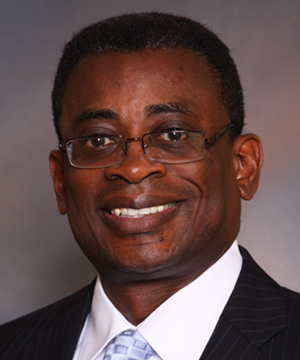October 2023
How plan design can help meet the needs of a diverse workforce
Workplace Insights™ talked with Kai Walker, head of Retirement Research and Inclusion Transformation, and Tom Kuuskvere, director, Plan Sponsor Consulting, about optimal retirement plan design and education to help support employee financial wellness and inclusive experiences.
Workplace Insights™ (WI): What is Bank of America’s approach to supporting the retirement needs of a diverse workforce?
Kai Walker (KW): Understanding the financial needs of each individual is fundamental to how we improve financial wellness for all and helps guide how we work to make retirement planning accessible to everyone. Through research and plan analysis to learn more about individual financial needs across all life stages, ethnicities, cultures, genders and ages, we gain valuable insights that help us create meaningful experiences and educational opportunities that resonate with employees and can ultimately help drive better financial outcomes. These insights can also help inform retirement plan design strategies and programs that encourage positive actions across employee cohorts to help move them toward their retirement goals.
WI: Tom, what are effective plan design strategies plan sponsors are using to help diverse segments of employees plan for retirement?
Tom Kuuskvere (TK): Within an employer-sponsored retirement plan, there is a range of strategies plan sponsors can leverage to help improve the financial wellness of employees and close the retirement wealth gap among diverse workforce demographics. Automatic programs are among the most effective design features plan sponsors can use to help impact participants’ trajectories toward retirement.
Employers can implement automatic programs on different scales—from tentative to robust. For example:
- A tentative implementation might automatically enroll new hires at a low rate, such as 3%, and include an automatic increase provision.
- The most robust solution would automatically enroll existing participants and new hires at a rate that maximizes the plan match and automatically increases deferral rates each year until a plan participant is deferring 12% to 15% of their pay (combined employee and employer contributions). Robust programs might also use periodic re-enrollment to encourage participation of employees who may have previously opted out of enrollment.
In plans we recordkeep, we are seeing implementation of automatic enrollment programs with 89% of plans using a default contribution rate of 3% or higher. We are also seeing that automatic enrollment can have a dramatic impact on plan participation, with an average 85% participation rate in plans with automatic enrollment and only 36% in plans without.1
WI: Are there formulas that can help plan sponsors design automatic programs to align with their company’s goals and budget?
TK: Depending on where a plan lies on the design continuum, there are various plan design decisions that can be leveraged to help tailor a solution to a company’s needs. Some of these solutions might include:
- Increasing the automatic enrollment default deferral rate to align with the plan match. For example, a plan that matches 50% of first 6% deferred would automatically enroll at 6%.
- If that creates too large of an expense burden for a company, some plan sponsors will maintain a lower initial default deferral rate but will implement automatic annual increase to get participants up to the plan match or beyond. In fact, we see a growing trend whereby many plans with automatic increase programs are extending that increase to 10%, 12% or even 15%.
- For the population hired before the company implemented automatic enrollment for new hires, sponsors are looking at the cost implications of retroactively auto enrolling all currently eligible but not participating employees. Some companies address the additional match expense by modifying the match formula to create a cost-neutral design.
- Companies with higher turnover rates who are exploring automatic programs are considering automatically enrolling eligible employees after a longer employment period, such as two to three years. Turnover rates tend to be significantly reduced at that point and the sponsor can help ensure career employees are contributing to their retirement plan.
WI: In addition to plan design, what are some other principles plan sponsors might consider to help support their employees in preparing for retirement?
KW: Employee education and engagement are critical. Participants who have access to employer-sponsored plans need support and guidance to identify adequate retirement income goals and develop a plan to pursue them. In addition, we need effective solutions that have the potential to help create a lifetime income stream using the lump-sum value of retirement savings. It is also important to limit leakage of savings from retirement vehicles while making sure workers are taking advantage of the portability of their savings when they change jobs.
Key takeaways
- Reach out to your Bank of America representative to learn more about automatic programs and other strategies than can help enhance retirement plan outcomes.
- Offer educational programs that consider gender, age, ethnicity and life stage to ensure messages are relevant and meaningful to employees.
- Review the 2023 Workplace Benefits Report for the latest insights on employee financial wellness trends across demographics, perspective from other plan sponsors and key actions for you to consider.
1 Bank of America 2023 401(k) Financial Life Benefits Impact Report, data as of December 31, 2022.




